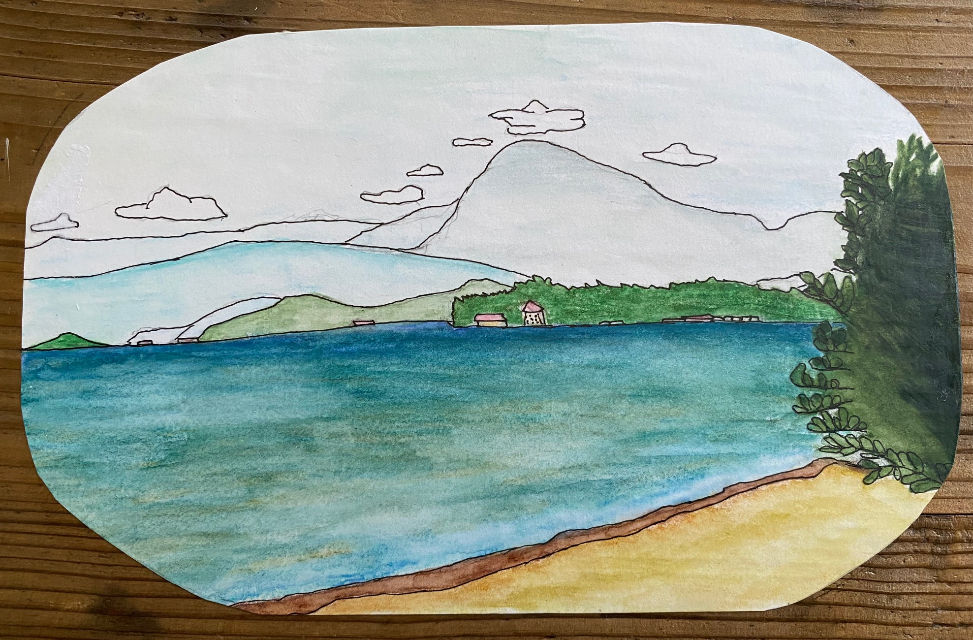MY LIFE IN BED
- Rebecca Otowa
- Feb 11, 2021
- 5 min read

Recently I had some dental work done, a tooth pulled actually, and before that I organized my bedroom so that I would be able to spend a couple of days recuperating with minimum disturbance. During that time of comfort and solitude, I found myself mulling over the various beds I have slept in in Japan and how my sleeping habits have changed over the years.
At the risk of spoiling the suspense, I should say that the bed I now have is the most comfortable I have had for years. It is a sheer positive pleasure getting into bed these days, and I loved the time I gave myself after the visit to the dentist so much that my husband suggested I spend a couple of days in bed regularly even if I’m not sick! That might be a little too much, but I have to admit it’s tempting. How often do adults get to enjoy their beds as much as they want? At the beginning of life, we are constantly being told to go to bed, to go to sleep, and when we are grown, we are forever exhorted to wake up, to get up.
I’m sure all of you know that the traditional Japanese futon is basically a sack stuffed with batting – ideally cotton. The upper futon is the same as the lower, just a little bigger. One inserts oneself between the upper and lower layers like the filling in a panini, with a pillow traditionally stuffed with buckwheat bran (which feels like small rocks) or more cotton batting, as well as sheets, covers, blankets, etc. depending on the season. The best thing about futon, I think, is their versatility. They can be put down anywhere, and placed alongside each other so as many as six people can sleep comfortably in one average size room. They can be folded and put away – people who live in small apartments do this every day. They are also relatively easy to air out, which is important in a humid country like Japan. On a sunny day, it is nice and homey to see all the futons hanging from the balcony railings of multistory apartment buildings.
It’s the lower futon, or shikibuton, that decides the comfort (or otherwise) of the bed. A bit of “loft” makes it soft and comfy, but of course over the years, cotton batting tends to pack down, resulting in the senbei buton – hard and unyielding as a rice cracker (senbei).
My mother-in-law made sure that I knew how to make a futon from scratch, and I made several as a young wife. Basically the method calls for a large sack made of cotton material, laid inside-out on the ground outside (put something down first to keep the new futon from getting dirty). Why outside? To keep the loose cotton, that inevitably starts flying around, out of the house. Then the cotton batting, which is usually plumped-up (uchi-naoshi) batting from an older futon, is laid in sheets vertically and horizontally until the desired thickness is reached, or until you run out of cotton. After that, lay a few nylon wrapping cloths (furoshiki) on top, and wrestle the whole thing into the cotton sack which, when turned right side out, becomes the futon’s cover. Bang it with the flat of your hand a few hundred times to get the cotton lying nice and even, and that night you can have a wonderful soft futon, unless it’s been decided that this futon is for guests only, in which case it is put away and you never see it again.
The first traditional part of the ensemble to be vetoed by me was the pillow. By then I was receiving catalogues from Lands End, so I ordered myself a couple of feather pillows. That was bliss! Next (about 20 years ago) I decided to look for mattresses to replace the rice-cracker futons. I bought two twin-size Sealy mattresses from the local furniture store, and we put them directly down on the tatami mat floor of our bedroom with the senbei buton on top. It was like having a queen-size bed, except there was no frame, and my husband and I slept happily on this bed till last year.
Then he had to have an operation, and I thought it would be easier for him to sleep on a regular bed when he got home; so we put together one of the kids’ old wood frame beds with one of the mattresses on top. By then I was having some trouble with my knees, and getting up from a mattress on the floor was beginning to seem a bit Bohemian (not to mention difficult) for a 65-year-old lady; so I investigated buying my own wood frame bed. What bliss, for the first time in over 40 years, every morning to get OUT of bed rather than UP. Our floors are very cold, since they are just straw matting laid over old wooden planks, beneath which is about 40 cm of windy empty space with ground (dirt) below; so being a little elevated makes it much warmer.
The last change we have made in our sleeping arrangements has been to sleep in separate rooms. My husband moved his bed into the next room, which is his “office” anyway; so the bedroom in which we slept for over 30 years is now mine alone. Some people might think this is unfriendly or cold behavior; all I can say is that I finally have a sleeping situation which exactly suits me in every respect.
As we age, my husband and I have to admit that we have different ideas of comfort. The bed or room is too hot for one and too cold for the other; lighting also can be a problem. Also, of course, elderly people can be noisy – snoring, coughing, etc. – which is bothersome for both. In addition, I often have insomnia around 2 or 3 am. So now I can turn on the light and read for a few minutes till I feel sleepy again without bothering my husband.
Being in bed for a couple of days on my own was sheer heaven. My bed, up against a big window with light-resistant drapes, with my own homemade stained-glass lamp, electric blanket, three different pillows, and very heavy (weighted!) old-fashioned upper futon, is like a private cave I retreat to with positive pleasure every night. I could knit, listen to MP3 on the computer, read, snack, nap, anything I wanted. The days of healing passed all too quickly. But I still heave a sigh of relief every time it’s time to turn off the light and snuggle into my bed.
I once heard a philosopher say that we love to sleep because it gives us a chance to play dead. Maybe so, but to have that wonderful time and space every single day to close our eyes and forget about everything, maybe to travel in our dreams to another place – it’s something to be grateful for.



Rebecca, I love your take on things! And now I know how to make a futon, a skill I hope never to need!
What a lovely, cozy nook you created for yourself!